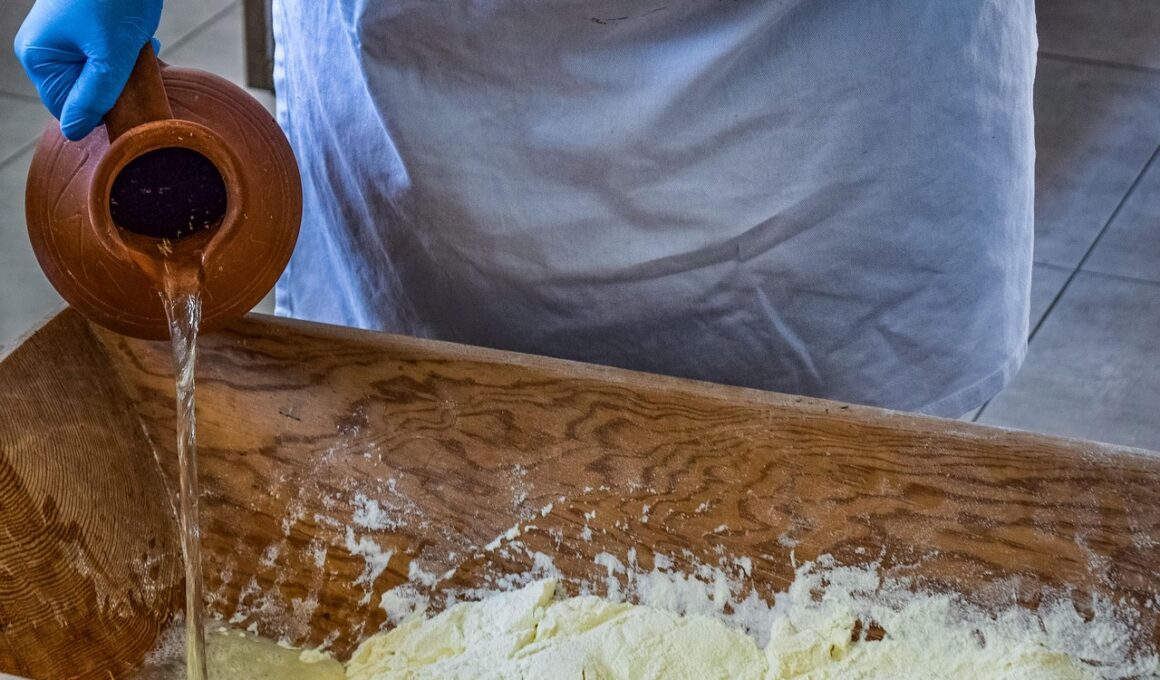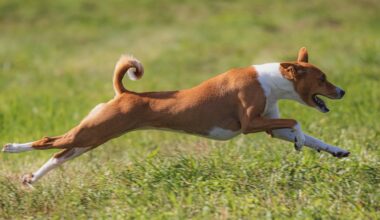Why Cats Knead Soft Surfaces and Blankets
Kneading is one of the cutest behaviors exhibited by cats, captivating the hearts of many feline lovers. Cats typically knead soft surfaces like blankets, pillows, or even their human companions. But why do they exhibit this behavior? The origins of kneading can be traced back to kittenhood when they knead their mother’s belly to stimulate milk flow. This instinctive action continues into adulthood, serving both emotional and physical functions. It is believed that kneading provides comfort and relaxation for cats, reminiscent of their nurturing days as kittens. When they knead, they seem to enter a state of bliss, demonstrating a deep sense of security. However, this behavior may also serve territorial purposes, where cats leave their scent markers on soft surfaces using the scent glands in their paws. Additionally, kneading can help stretch their paws and muscles, assisting in maintaining paw health. Owners often witness their cats kneading, purring contentedly as they perform this charming act, further strengthening the bond between pet and owner while showcasing their cute antics. Not only is kneading adorable, but it also highlights the unique nature of our feline companions.
Understanding the significance of kneading goes beyond just its cuteness. Each cat may have a unique kneading style, with some being more vigorous than others. This individual variation often reflects their personality traits. Some cats may knead in preparation for sleep, creating a soft, comfortable spot to curl up in. This behavior can be seen as their way of making a cozy bed, securing a perfect resting place. In a multi-pet household, kneading can signal a cat’s desire to stake claim to certain areas or even show contentment in displaying their presence. Moreover, the repetitive motion of kneading provides a calming effect on the cat, reducing stress and anxiety. This can be particularly beneficial for rescue cats or those that have experienced trauma in their past. The simple act of kneading acts as a soothing mechanism for nervous cats, allowing them to feel safe. Furthermore, observations show that cats may knead when owners are present, showcasing a strong bond. This behavior not only comforts cats, but it also generates joy for those who witness it, making cat ownership all the more rewarding.
Furthermore, kneading can serve as a means of communication among cats, especially when they feel happy or content. When observing a cat kneading on a blanket or their owners, one might notice a relaxed body posture along with gentle purring. Cats express various emotions through their behavior, and kneading often indicates satisfaction, warmth, and love. Some studies have noted that cats may also knead when they feel playful or curious about their surroundings. This indicates their emotional state, which pet owners can recognize and respond to positively. By doing so, it can lead to more interactive play and strengthen the bond. Additionally, cats benefit physically from kneading, as it aids in keeping their claws trimmed naturally. Kneading can also help remove dead skin cells from their paws, maintaining overall paw health and hygiene. Overall, while the act of kneading might be puzzling for some, it is a vital expression of a cat’s feelings and physical needs. By understanding this behavior better, cat owners can connect more deeply with their pets, creating a more harmonious living environment.
The Benefits of Kneading for Cats
There are numerous benefits that kneading provides to cats, both physically and emotionally. For cats, kneading can act as a natural stress reliever, similar to how humans may fidget or engage in activities to feel relaxed. The rhythmic motion of kneading can stimulate the release of endorphins, leading to feelings of happiness and comfort. It is often observed that cats who knead appear more content during and after the process. This reaction gives owners an opportunity to bond with their cats during their kneading sessions, reinforcing trust and affection. Moreover, kneading also promotes physical fitness. As cats knead, they engage their paw muscles, keeping them strong and agile. This form of exercise can be particularly helpful for indoor cats who may not have as many opportunities for active play. Kneading allows them to stretch their muscles, improve circulation, and maintain proper joint flexibility. Thus, it offers them an engaging activity that promotes both their physical and mental well-being. Moreover, some cats knead throughout their lives, showcasing how this behavior continues to fulfill their needs as they grow older.
Another fascinating aspect of cat kneading pertains to its social implications. Cats are generally solitary animals, yet kneading can act as a bridge between social bonds. When a cat kneads near its owner, it is an expression of trust and the establishment of a strong connection. This mutual understanding fosters a loving environment, making pets and owners feel more connected. It is suggested that observing this behavior offers insights into a cat’s mood and emotional state. A relaxed cat that kneads is likely feeling happy and secure in its environment, which indicates that the home atmosphere is safe. Additionally, cats sometimes knead when they seek attention, signaling a desire for affection. Owners should capitalize on these moments to strengthen their bonds, as kneading serves as a catalyst for positive interactions. While this behavior is often associated with comfort, it equally showcases the joyful engagement that can exist between cats and their owners. Ultimately, encouraging this bonding through kneading sessions can not only brighten a cat’s day but also uplift its human’s spirits.
Encouraging Positive Kneading Habits
To nurture and promote positive kneading habits in your feline friend, consider creating cozy environments that encourage this behavior. Cats tend to gravitate toward soft and plush surfaces, so providing dedicated areas with blankets, cushions, or soft beds can be incredibly beneficial. Observing where your cat prefers to knead can also allow you to adapt their space to ensure maximum comfort. Additionally, owners should take time to engage with their cats during these gentle kneading sessions. This could be as simple as petting them softly or offering gentle words of encouragement while they knead. Establishing a calm atmosphere will enhance their comfort level, making your cat more likely to choose these positive spaces repeatedly. It is essential to avoid scolding or discouraging kneading behavior, as this can create anxiety for your cat. Instead, provide gentle redirection toward appropriate surfaces if they knead on unwanted furniture or spaces. Some cats might appreciate interactive toys during these moments, offering diversions that keep them entertained and engaged without disrupting their kneading. Creating a harmonious environment caters to their instincts, enhancing both their behavior and heartwarming companionship.
Pay attention to your cat’s body language while they knead, as it provides valuable insights into their feelings. If they knead while purring and exhibiting relaxed body language, it indicates happiness. Conversely, if a cat appears anxious or overly aggressive while kneading, it might signal discomfort or anxiety. Intervening early on can help address these emotional concerns effectively. It’s also beneficial to regularly play with your cat since it enhances overall mental stimulation. Engaging them in playtime can reduce feelings of solitude and enhance their well-being. Exercising positive reinforcements can promote good behavior, leading to a well-adjusted feline friend. Encouraging kneading as a form of self-soothing can create an environment where your cat feels safe and loved. Ultimately, fostering an atmosphere that embraces their kneading instincts will deepen the trust and bond between you and your cat. Make sure to respect your cat’s feelings regarding their kneading behaviors and adapt your strategies accordingly. By doing so, you will effectively create a nurturing environment that meets their needs, ensuring both the anxiety-free existence of your cat and the joy of companionship that comes with it.
Kneading and Cat Health
Lastly, let’s explore how kneading can positively influence cat health. The act of kneading serves as an exercise for the lower body and paws, promoting muscle flexibility and joint health. Regular kneading helps prevent stiffness and keeps your cat agile as they age. This important exercise is particularly crucial for indoor cats, who may not have enough opportunities for natural physical activities. In addition to promoting physical health, kneading may enhance mental well-being by providing a stress relief outlet. Studies indicate that animals who experience less stress often enjoy better health and longer lifespans. By encouraging kneading behavior, you’re helping your cat process emotions and create an outlet for pent-up energy. Furthermore, kneading can stimulate circulation in their paws, promoting overall blood flow and keeping their extremities healthy. Encouraging kneading early and respecting their space maintains the health benefits in adulthood. Overall, while kneading may seem like a playful habit, it harbors many significant benefits that correlate to a cat’s physical and emotional health. Adjusting homes to accommodate this natural behavior ensures that your feline friend has a thriving and healthy life at home, fostering well-being for years.


